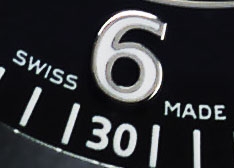 Synonymous with quality and reliability, the “Swiss Made” label is a much sought-after label in watchmaking. The official definition of its use actually allows some watches to be sold as “Swiss,” when they are actually not completely so. How, you ask?
Synonymous with quality and reliability, the “Swiss Made” label is a much sought-after label in watchmaking. The official definition of its use actually allows some watches to be sold as “Swiss,” when they are actually not completely so. How, you ask?- the movement is Swiss (see below);
- the movement is fitted in Switzerland; and
- the final manufacturing control takes place in Switzerland
A movement is considered Swiss if:
- it is assembled in Switzerland;
- controlled by the manufacturer in Switzerland; and
- at least 50% of the value of its components are produced in Switzerland, not including the assembly costs.
So other components can come from elsewhere - dial, hands, case and bracelet. The definition of “Swiss Made” does not enjoy unanimous support within the profession. Many regret that brands whose components are all, or almost all, made in Switzerland should be treated in the same way as those who observe only the legal minimum. What about the 50% rule? How should these be calculated? How can they be controlled? The ordinance spells out certain rules, but considering the differences in costs for materials and labor between Switzerland and abroad, can one really establish whether or not whether the “majority” of a movement is made in Switzerland? Some are demanding even stricter prescriptions, which should also include the watch exterior components.
No comments:
Post a Comment